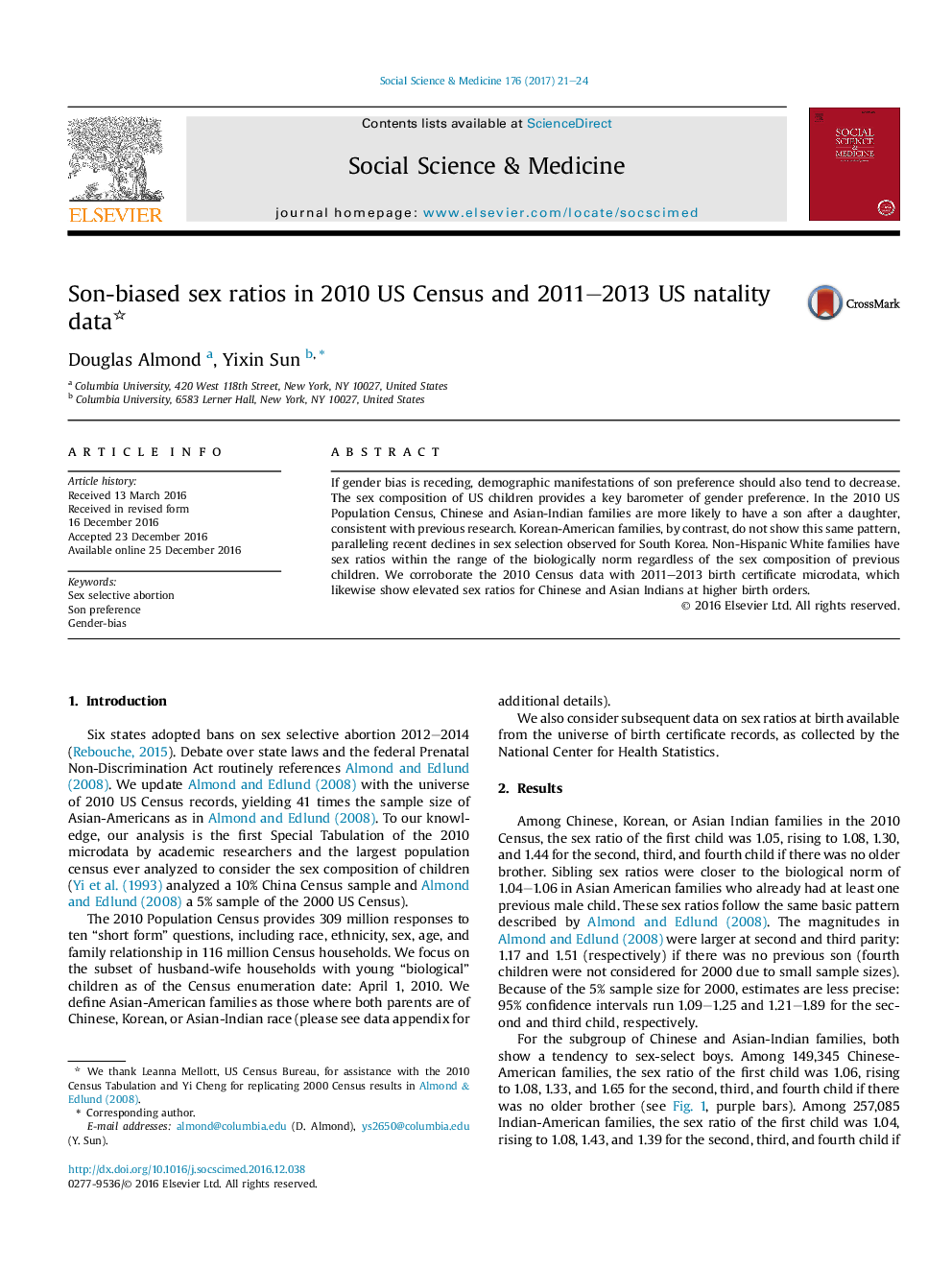| Article ID | Journal | Published Year | Pages | File Type |
|---|---|---|---|---|
| 5046742 | Social Science & Medicine | 2017 | 4 Pages |
â¢Consider male births in 2010 US Census and 2011-2014 birth certificate records.â¢Updates Almond and Edlund 2008, which documented male-biased sex ratios.â¢Male-biased sex selection persists in Asian American families.â¢In the absence of a previous son, fraction male increase.â¢Korean-Americans have different sex composition more similar to non-Hispanic Whites.
If gender bias is receding, demographic manifestations of son preference should also tend to decrease. The sex composition of US children provides a key barometer of gender preference. In the 2010 US Population Census, Chinese and Asian-Indian families are more likely to have a son after a daughter, consistent with previous research. Korean-American families, by contrast, do not show this same pattern, paralleling recent declines in sex selection observed for South Korea. Non-Hispanic White families have sex ratios within the range of the biologically norm regardless of the sex composition of previous children. We corroborate the 2010 Census data with 2011-2013 birth certificate microdata, which likewise show elevated sex ratios for Chinese and Asian Indians at higher birth orders.
